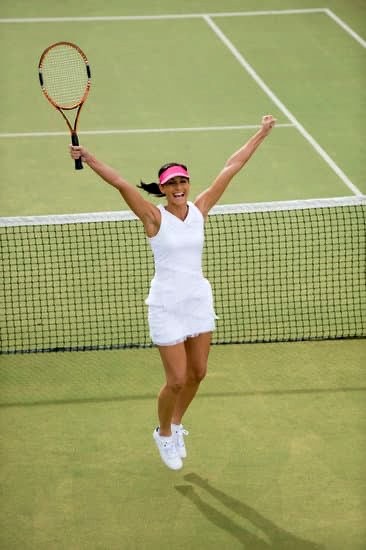Tennis is a sport that requires immense dedication, training, and skill. Developing a young player into a professional tennis prodigy is a complex and expensive process that involves a significant investment of time and resources. From coaching and equipment to travel and competition fees, the cost of developing a top tennis player can add up quickly. In this article, we will explore the cost and strategy of developing a young tennis prodigy and how it can lead to the creation of the next generation of tennis superstars.
The Cost of Developing a Tennis Prodigy: Risks and Rewards

Despite the high costs of developing a young tennis prodigy, the potential rewards can be significant. A successful player can earn millions of dollars in prize money, endorsements, and sponsorships. However, the investment in a young player is not without risks, as the vast majority of young players will never make it to the professional level.
Sponsors and endorsements play a crucial role in funding player development, with many top players having lucrative sponsorship deals with major brands. These deals can provide young players with the financial resources they need to continue their training and development.
The NextGen Tennis Strategy: Investing in Young Talent
The NextGen tennis strategy involves identifying and nurturing young talent from an early age, with the goal of developing them into elite players. This often means starting as young as 13 or 14, with players beginning to compete at the professional level by their late teens. The strategy involves investing in top-notch coaching, training facilities, and equipment, as well as extensive travel and competition fees.
The benefits of this strategy are clear: young players who are developed in this way have the opportunity to hone their skills and mental toughness over a longer period of time, potentially leading to a more successful career.
However, there are also challenges associated with this approach, including burnout and the pressure to perform at a young age.
The Changing Landscape of Tennis: The Impact of NextGen Players

Their success is also highlighting the importance of the NextGen strategy, with more and more players and coaches recognizing the benefits of investing in young talent. The potential impact of these young players on the future of tennis is significant, as they are pushing the boundaries of what is possible and inspiring a new generation of players to follow in their footsteps. As the sport of tennis continues to evolve and adapt to the changing landscape, it is clear that the NextGen strategy will play a crucial role in shaping the future of the sport.
Advancements in Technology: Transforming Player Development
In recent years, technology has become an increasingly important tool in the development of young tennis players. Coaches and players are using data analysis and virtual training to gain a competitive edge and push the boundaries of what is possible in the sport.
Data analysis allows coaches to track a player’s performance and identify areas where they need to improve. With the help of technology, coaches can track things like serve speed, shot placement, and court coverage, and then use that information to design targeted training programs.
Virtual training is another technology that is changing the way young players train. Virtual training allows players to practice and compete in simulated environments that mimic the conditions of a real tennis match. This technology allows players to develop their skills and test their abilities in a safe, controlled environment.
While technology offers many benefits, there are also some drawbacks to using it in the development of young tennis players. For example, players may become overly reliant on technology and neglect important aspects of their training, such as physical conditioning and mental toughness.
Mental Toughness: The Key to Success for Young Tennis Players
In addition to technical skills, mental toughness is an essential quality for any successful tennis player. Developing mental toughness is particularly important for young players who are facing the pressures of competition and the expectations of coaches and fans.
Mental toughness refers to the ability to stay focused and perform at a high level under pressure. It also involves the ability to bounce back from setbacks and maintain a positive attitude in the face of adversity.
Coaches and players use a variety of strategies to develop mental toughness in young players. These may include visualization exercises, goal setting, and positive self-talk. It’s also important for players to learn how to manage their emotions and stay calm and composed during a match.
By focusing on developing both technical skills and mental toughness, coaches and players can help young tennis players reach their full potential and become the next generation of tennis stars.
Follow the Future of Tennis: Keep Up with Breaking Tennis News
As we’ve seen in this analysis, developing young tennis players can be a risky but potentially rewarding strategy for coaches and sponsors. The rise of NextGen players like Coco Gauff, Jannik Sinner, Carlos Alcaraz, Emma Raducanu, Felix Auger-Aliassime, and Naomi Osaka are all evidence of the potential benefits of investing in young talent.
